Neck Pain Treatment Guide
 Neck pain treatment is something not usually thought about until there is pain. However, the neck is a pathway from the brain to the entire body. The upper part of the neck houses an extension of the brain that controls vital functions of the body. The spinal cord moves down the neck where nerves and blood vessels extend. The neck must be flexible for motion, yet be strong enough to support the head, which can weigh up to fifteen pounds.
Neck pain treatment is something not usually thought about until there is pain. However, the neck is a pathway from the brain to the entire body. The upper part of the neck houses an extension of the brain that controls vital functions of the body. The spinal cord moves down the neck where nerves and blood vessels extend. The neck must be flexible for motion, yet be strong enough to support the head, which can weigh up to fifteen pounds.
Stress from poor neck posture, muscular tension, everyday wear-and-tear, as well as injuries like whiplash can place your neck at risk of neck pain.
Common Symptoms
With neck problems, there is usually pain and you may have difficulty with moving your head, along with the possibility of these neck pain symptoms:
- Neck Stiffness
- Pains going to your head, shoulder or arm
- Numbness/Tingling going into your arm, hand or fingers
- Headaches
- Possible dizziness
- Possible nausea
Neck Pain Treatment
If you are experiencing a painful neck, it is always a good idea to visit a Medical or Chiropractic doctor to find out the possible causes and get advice on the best treatment options that can bring about symptom relief. It may be that your condition will be responsive to self care treatment. There are therapy products which can provide relief and the more you know about the cause, the more effective treatment can be. It is also important to learn methods that can help you prevent future difficulties like neck exercises and posture correction.
Examination
A healthcare provider will examine your neck in order to help discover possible causes. First, you will fill out forms and be asked questions regarding your health history and details regarding your neck pain. The doctor or assistant will give an examination, which may include additional teats or procedures like x-rays. When the doctor has sufficient information from the history and examination, he or she will be in a position to recommend neck pain treatment options or may send you for further evaluation by a specialist.
During the history part of your examination, you will be asked questions that can provide the doctor with details that may give some insight to what the problem is or direction to concentrate on a certain details of the examination. Questions will vary, however, you can expect some along this line:
- When did you first notice your neck pain?
- Was there an injury or accident?
- Were you doing anything just prior to the pain starting?
- Did you ever experience this type of pain before?
- Have you had any treatment for neck pain before?
- Show me where the pain is?
- Is the pain just in your neck or does it go into your chest, arm, shoulder or face?
- Does the pain stay the same or does it come and go?
- What makes the pain worse?
- What makes the pain better?
- Do you have a fever or feel sick?
An examination is done checking your range of neck motion and to see which motions cause pain as you move your head. The doctor will check to see how you hold your head and shoulders and if it is affected by the pain. The examination may include orthopedic checks which place stress on areas of the neck to check for symptoms. The doctor pay push down on your head or lift your head up to see if this makes your neck pain worse or better. You muscle strength may be tested and this will include the arms. Sensation in the arms may be checked using an instrument called a pinwheel, and this does not hurt. The doctor may also check your reflexes in your arms.
Based on your history and examination findings, further testing may be necessary to get more details and aid in the choice of neck pain treatment options. These tests may include:
- X-rays show bones in the neck
- Magnetic Resonance Imaging (MRI) can detail any problems with the discs, nerves, bones and show signs of tears and inflammation, as well as changes in the discs, nerves and bone
- Computed Tomography (CT) can show further details of the bones
- Myelography can detail problems involving the spinal cord and nerves
- Blood Testing can show additional problems
Structures Targeted For Neck Pain Treatment
A normal and healthy neck has adequate strength and flexibility, thus maintaining proper motion and alignment. Muscles, tendons, ligaments, joints, discs and bones will all function together, providing normal motion and flexibility. If any of these structures are not functioning correctly, there may be limited and/or painful motion when moving the head and neck, as well as the shoulders and arms.
There are seven bones in the neck which sit on top of each other. The neck is called, in medical terms, the cervical spine. An opening in the middle of the spinal bones contains the spinal cord, which is an extension of the brain and provides the means with which the brain communicates with the rest of the body. If there is narrowing of this opening or pressure on the spinal cord, a condition called myelopathy may result.
The spinal cord is like the trunk of a tree, and branches that come off of it are nerves. These nerves go through openings in the bones called a foramina. Problems that narrow any of these openings may result in a “pinched nerve” or cervical radiculopathy from conditions like cervical spondylosis or a herniated disc, and this may cause pain, numbness and/or tingling sensations in the head, shoulder, chest, arm, hand, fingers. This is called referred pain, which may be constant or only with certain motions, postures or when you cough or sneeze.
Muscles can be a source of pain in the neck. They provide head support, produce motion and can connect to the head and shoulders. They connect to bones by tendons. As you move the head or shoulders, some of the neck muscles contract or shorten, while others stretch or lengthen, providing balanced motion. If any of these muscles suddenly contract on their own, this may result in a neck muscle spasms. Stressful situations can also cause stiff neck muscles.
Knowing about your neck is important and we also suggest you see the article on neck pain for a great overview of methods you can do at home for the treatment of neck pain.
Posture
Neck pain and stiffness can be a consequence of poor posture, as the neck looses its normal health curve, positioning forward and placing harmful stress on the sensitive structures of the neck. Therefore, correct posture is necessary to relieve stress from your neck. For example, as the head moves forward just one inch, this doubles the effective weight the neck must support. Try holding 10 pounds close to your body and see what happens as you move it further out from your body. This is what happens to your neck from bad posture and it can cause a sore, painful neck.
Here are some tips to help reduce pain with good posture
When Sitting Down:
- Keep your on the floor, using a telephone book or foot rest if needed. Keep the knees at a level just under the hips and this can help prevent back pain from a psoas syndrome. Avoid sitting with on a back pocket wallet. Take it out and keep it somewhere safe or use a front pocket wallet designed for this very purpose.
- Using a comfortable neck rolls and specialty pillow can help reduce muscle strain, supporting your neck in the correct postural curve for therapy and/or to prevent strain when traveling.
- Because the entire spine is connected, supporting back pillows for the low back can help. A good neck roll can provide this function since the curve in the lower back is similar in shape to the neck. You can also roll up a towel and place it behind your lower back for support.
- When driving in a vehicle, the headrest should support the head and keep the neck in good posture. To help with this on long trips, there are support for drivers and passengers. While there are many types of back supports, the therapeutic support addresses the head, neck and back at the same time. Make sure your seat is adjusted so you do not have to strain to use the pedals.
- The effects of sitting for long periods can be harmful to both the neck and the back. If you can not take frequent breaks, use a Backtivator Active Seat Cushion or other seat cushions designed to help prevent muscle fatigue.
- When using a computer, make sure it is set up correctly, using ergonomic methods to maintain good posture. You can see how sitting at a computer or work station can be improved to help with improving ergonomics to reduce strain.
When Standing Up:
- Maintaining good standing posture means your shoulders are relaxed and the ear, shoulder and hip line up.
- Pain from prolonged standing can be minimized by placing one of your feet on small foot stool, changing feet frequently to lower pressures from the spine.
- Remember to bend from your knees, keeping the back and neck straight. Make sure you are aware of safe lifting techniques.
- Try to work keeping objects at eye level. Rather than reaching up and arching your head backwards, make use of a small. For those who work with the head arched back like painters, or if you do activities looking up a lot, the neck guard support can be beneficial.
When Sleeping or Resting Lying Down:
- Make sure you have a medium density mattress. If yours is too soft, you can use a half inch plywood under the mattress for more support. If it is too hard, a topper can be a temporary solution, but it is best invested in a new mattress.
- Using supportive pillows that are designed for correct neck alignment can prevent a crick in your neck. A pillow that is not at the right height can cause imbalance in the neck. Sleeping on your stomach can place harmful stress on the neck, therefore, it is important to help prevent this with a properly designed functional pillow or body pillow which is designed to help transition from stomach sleeping to side sleeping posture.
- Maintaining proper spinal alignment when sleeping is important for the entire spine. If lying on your side, keep your knees bent slightly a body pillow between them. When lying on your back, you can use a pillow underneath the knees to help reduce back pain.
Neck Pain Treatment – Relieving Stress
Stress can play a major role in maintaining unhealthy levels of muscle tension. This harms muscles and reduce proper blood flow leading to chronic tension, neck and shoulder pain as well as aggravating already injured neck structures.
- Use a break to take a short walk and get some fresh air.
- Exercising can reduce stress levels as well as improve your health.
- Use mental imagery to imagine yourself in a calming place.
- Take steps to use better time management.
- A massage is a great way to help loosen stiff neck and shoulder muscles.
- Talk about things with a friend or even a counselor, if you have neck pain, you can read more about coping with neck pain to help make it less stressful.
Daily Wear and Tear in the Neck
Growing older, neck problems can occur from daily wear and tear. When this becomes a condition, it is known as degenerative disc disease. Wearing down of the spinal bones can cause irritation and swelling of joints, often termed arthritis. Discs, the shock absorbers in your neck can tear, leading to a herniated disc. This condition is also related to injuries and genetics which may predispose one to early onset and more severe symptoms.
As a disc wears out and degenerates, it looses height and elasticity. This prevents it from performing its normal function of providing a cushion in between the bones. As the disc wears down, bones can start rubbing each other. This may lead to the structures being unstable, and the body tries to stabilize the situation by forming bone spurs to bridge one bone to another. The bone spurs are outgrowths that form and may cause nerve pinching, which is painful. As the spine degenerates further, stress is placed on the joints which help the neck to glide, leading to a joint problem called facet joint syndrome.
Neck pain treatment can often help within 6 – 8 weeks. The treatment may include anti-inflammatory medications, pain relievers, muscle relaxants, therapy like moist heat, massage, stretches and exercise. The problems may return and, in some cases, when these treatment measures do not provide relief and the pain is severe, injections or surgery may be indicated.
Neck Injuries
When the neck is injured, sudden motions can cause overstretching of the muscles and ligaments. This can cause tearing of a muscle (strain) and tearing of a ligament (sprain). Both may occur together. Injuries to the neck can also happen if you hit your head. In the event that your neck is injured, it is important to have it examined right away for proper neck pain treatment from the beginning.
Whiplash
Vehicle accidents can result in whiplash injuries. If the vehicle is struck, the head can whip in one direction and rebound in the other direction. Even if the accident is minor, there may not be immediate pain, however, whiplash symptoms like pain and stiffness may be noticed a few hours later or the next day. Most will experience whiplash recovery within a few months, however, neck pain from whiplash may recur and become a chronic problem to manage. It is important to help prevent a whiplash injury and especially after you have one or are recovering from one, to reduce the impact of a second one. Adjusting your head rest properly is important and many new vehicles have improved head rests.
Other Neck Injuries
Because there is a direct connection between the head and neck, an injury to the head poses risk of damage to the neck. Sports injuries involving the head can cause neck injuries. Football injuries can cause neck damage by using the head in blocking or tackling. When swimming, diving into shallow areas can lead to hitting the bottom. Slipping or falling at home or at work can also cause neck injuries.
Neck Pain Treatment: Self Care
A simple measure of treating neck pain at home is just lying down, giving sore muscles some time to recover and relax. To provide extra support and ease muscle tension, rest on a neck roll or supportive pillow. Make sure you rest on your back or side and not on your stomach.
Traction for use at home relieves the pressure of the head from tired, overworked neck muscles, discs and nerves. Traction stretches contracted neck muscles, allowing more space for blood vessels and nerves. The range of traction products for the neck is great and with inflatable neck collars, it is an easy and affordable method to use.
Relief of Muscle Spasms
Muscle spasms can result from sudden or prolonged contractions. This may cause painful areas in the neck called trigger points. Treatment for spasms include exercise, moist heat, ice packs and medications.
Heat Applied To The Neck can relax muscles while increasing blood circulation. Heat may be used on painful areas of the neck with a hot shower or moist heat pack. It should be moist heat and not dry heat. Heat, when used prior to massage, exercise or traction can help improve results.
Ice For The Neck can help minimize inflammation to injured structures. Place ice cubes in a plastic bag or even use a bag of frozen vegetables or an ice pack and you can place it under a moist towel before application. Some people have a bad reaction to ice on their neck as this can tighten muscles. Care should be used as there can be a reverse reaction after ice application as blood rushes to the area after treatment. Ice should be used only in the acute stage of an injury.
Exercises For The Neck helps to strengthen muscles, preventing stiffness and injury. They can help restore proper muscle function. Simple stretches can help relax muscles and increase range of motion.
Medicine may be over the counter or by prescription for pain or muscle relaxation. Ibuprofen is an example of an anti-inflammatory that is used for pain. When seeing your doctor, there are many neck pain medications he or she may prescribe.
Massage is a relaxing method used for neck pain treatment and is effective for short term relief. In general, massage from top of the muscle down the neck. You can see a professional for massage and they use numerous specific and general techniques that are often used in sequence, such as effleurage (stroking), petrissage (kneading), and percussion. It may be the earliest and most primitive tool to improve pain. The most ancient references to the use of massage come from China (around 2700 BC). With the popularity of massage therapy in the world, common types of massage therapy include Swedish massage, Shiatsu, Rolfing, Reflexology, Myofascial Release, and Craniosacral Therapy.
Therapy for Neck Pain
You may see a Physical Therapist or Chiropractor that use some of these therapies for neck pain treatment.
- Heat – Special heating pads may be applied. deep heating machines like ultrasound or diathermy can provide heeat in deeper structures than hot packs.
- Exercises – Special exercises may be provided in order to increase the strength of the neck as well as improve motion. These exercises may be given to you for home use or done in the office with special exercise devices.
- Mobilization – A technique where your neck is gently moved to engage the vertebrae and restore normal movement in joints of the neck.
- Adjustments – A technique where your neck is specifically analyzed and a force is applied to restore joint function and vertebral alignment. This may also help to break up adhesions that form from scar tissue after an injury. Manipulation is a term often used for this, however, it usually indicates a more general application of force.
- Traction – Traction machines can help to remove harmful pressure in your neck. This may include static, intermittant or intersegmental traction for pulling the vertebra apart or for general mobilization.
- Electrical Stimulation – Machines are designed to deliver therapeutic electrical currents to the neck which helps to alleviate pain and reduce swelling. There are a number of different types of machine that perform this function and electrical stimulation can also be combined with ultrasound. You may be instructed to use electrical stimulation at home by using a TENS Unit.
- Massage – You lay on a table while a technique or techniques of massage therapy are applied to your neck. This may be a short period of time directed to specific area(s) or a general therapeutic massage to your neck and shoulders. This depends on the goal of treatment done by the doctor or prescribed. Massage may be done in general to relax muscles or specific techniques may be used to help restore muscle function.
Home Neck Exercises and Stretches
Exercises may be done at home to help restore motion, strengthen muscles or improve posture. Exercise is a well documented and recommended treatment for neck pain.
Introductory neck exercises and subsequent neck stretches are used to improve the function of some weak muscles associated with neck pain and forward head posture. There are simple range of motion neck stretches which is a good starting point and a general home exercise program for neck pain. There are also exercises focused on to help: trapezius myalgia pain, posture rehabilitation, relieve neck pain, strengthening, neck & shoulders and the simple to do while sitting neck lengthening.
Cardiovascular exercise is a generally recommended method to increase the strength of the spine, neck and shoulders. This also has benefit for stress relief and general health. Walking, jogging, biking and swimming are good ways to help you stay healthy. Check with your health care provider before starting any exercise program and what may be best for your specific situation.

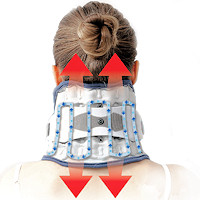 Neck Traction Devices
Neck Traction Devices Cervical Pillows
Cervical Pillows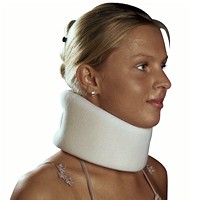 Neck Support Collars
Neck Support Collars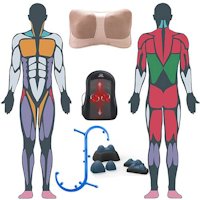 Muscle Therapy Tools
Muscle Therapy Tools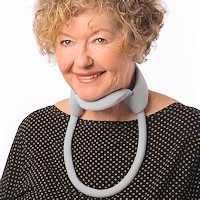 Head Supports
Head Supports Topical Pain Relievers
Topical Pain Relievers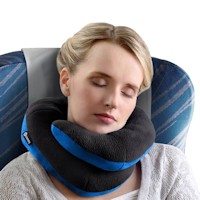 Special Pillows
Special Pillows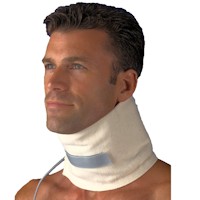 Heat Therapy
Heat Therapy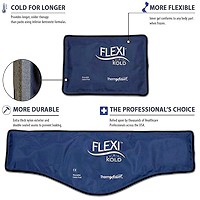 Cold Therapy
Cold Therapy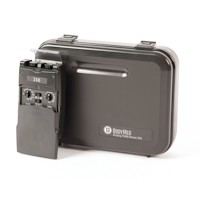 TENS Therapy
TENS Therapy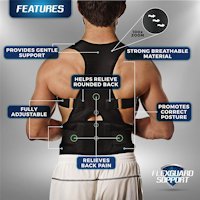 Posture Braces
Posture Braces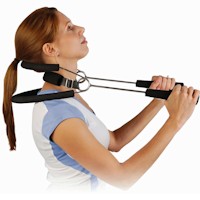 Neck Stabilization
Neck Stabilization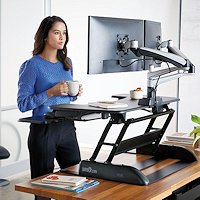 Ergonomic Aids
Ergonomic Aids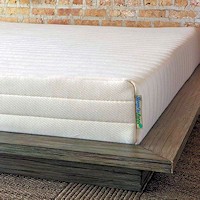 New Mattresses
New Mattresses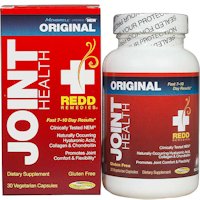 Relief Supplements
Relief Supplements